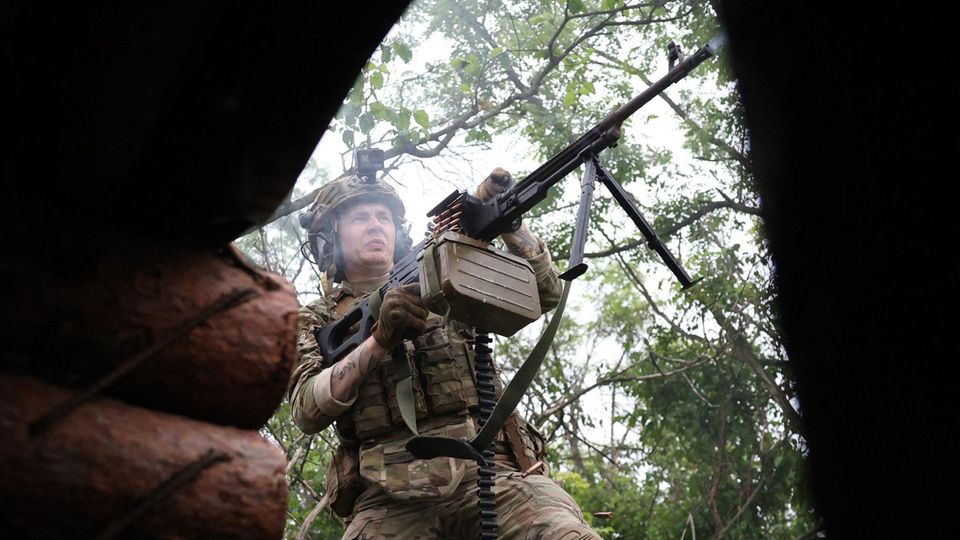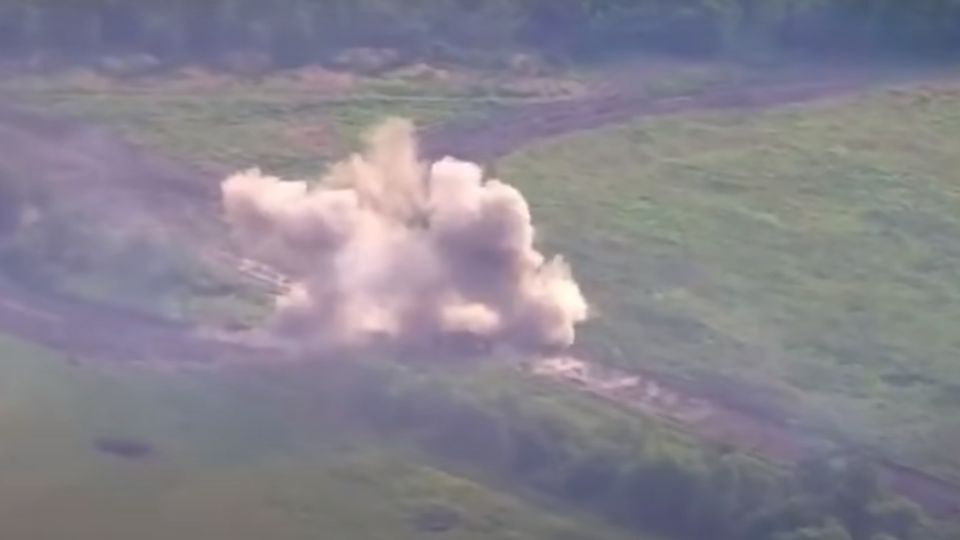War in Ukraine
“God loves the Infantry” – why Ukraine abandoned NATO tactics and succeeded with foot soldiers
Training of the Ukrainian 3rd Assault Brigade – equipped with old Soviet weapons.
© Ukrin/dpa
A textbook deep breakthrough with armored troops is not possible. Using small squads of infantrymen, the Ukrainians wear down the Russian front and create a line of positions from which they can break through the Russians’ main defensive line.
At the beginning of the summer offensive, the Ukrainian armed forces carried out their attacks with armored columns – NATO-style, albeit on a smaller scale. These battle groups were an armored fist. With the mixture of protecting the Vehicles, the speed and the enormous firepower of the heavy cannons of the main battle tanks and the machine cannons of the armored personnel carriers, it was hoped that they would be able to punch a hole in the Russian trenches and then advance further. They probably also relied on their own narrative about the poor morale of the Russian soldiers, who would have simply fled the violence of such a mechanized group
It quickly became clear that everything about this original calculation was wrong. The Russians did not flee. Their defensive system of mutually supporting positions was constructed far more effectively than expected. Then mines and artillery prevented rapid movements of armored forces. In fact, these groups stopped before they even reached the Russian outposts.
Missing requirements
The operational planning of NATO and the USA envisages defeating the enemy at one of his weak points with a decisive focus on strong forces. Ultimately the idea goes back to Clausewitz. And criticism quickly arose, saying that Kiev was only able to achieve such limited success because Kiev did not quickly and decisively bring stronger forces into the field.
That’s probably just wrong. From the outset, Kiev’s offensive differed from any NATO plan. Kiev has no significant air support – something like that is not provided for by the US forces at all. When it comes to artillery, the Russians are usually superior at the front, but Kiev was unable to achieve numerical superiority either on the entire front or in individual sections. All basic requirements for an offensive according to Western ideas. It was simply not intended that ancient minefields and static defenses could be so effective. In addition, any form of movement near the front is spotted by drones.
The infantry bears the burden of the fighting
Kiev’s military leadership was able to relatively quickly abandon this disastrous approach and adopt other methods. They are essentially based on foot soldiers. Since then, the infantry has borne the brunt of the fighting.
At first, the Ukrainians focused on moving small groups of soldiers along the lines of trees that dot the landscape. There were fewer mines planted there at the beginning, the trees offer protection from enemy fire and premature discovery.
In this way, small attacks were constantly carried out. Most were unsuccessful, but gradually, especially in the Robotyne area, the Russians were able to be pushed out of their outposts and in a few places they were able to push in their first main line of defense.
Indentation at Robotyne
The Ukrainians now hold this position: they originally came from the area around Novodanylivka and Mala Tokmatschka. In a tough fight, they managed to first throw the Russians back on Robotyne and finally push them out of the place completely. They also dominate the area to the east and have advanced to the edge of Werbowe. Here the first main Russian defense line was broken and the Challenger 2 tank was also lost here. The Russians continue to hold the town of Werbowe and are at least partially established in the tree lines south of Robotyne. The Russians also hold positions west of the town, the Ukrainians are trying to advance further east towards the south.
The Ukrainians have concentrated strong units in this section of the front, but the mechanized forces are only occasionally used. In the last few days the battle has again been fought by infantry squads. Infantry fighting vehicles (IFV) and armored transport vehicles (APC) are primarily used to bring the fighters. Because the success of the Ukrainians brings its own problems.
In order to get from a reasonably safe deployment to the contact line, almost ten kilometers have to be covered. It would take infantrymen too long. There would be a great risk that they would be discovered and shot at on the long march. The current procedure can be seen in numerous videos. One to three transporters approach as quickly as possible, then stop in a row of trees near the contact line and drop off the soldiers. Then they disappear again.
The small squads, often only ten to twelve men, are not looking for a big breakthrough; they carry out a small advance in order to dig in and establish a firing position. If this were successful, the next group would try the same thing a few hundred meters further. In this way, a new line of our own should be built up in very small steps. Once this has happened sufficiently, a larger attack with armored forces can again take place. This approach was copied from the Wagner mercenaries in the Battle of Bakhmut. Here the shock troops were followed by special “spade soldiers” who immediately began to set up positions.

Soldiers against drones and artillery
The Ukrainian approach is successful because the Russians also do not have a densely manned front line. They deploy few soldiers there so that they are not constantly shot at by the Ukrainians. The Ukrainians seep into the gaps in this porous system.
For Kiev’s fighters, the whole thing is a bloody gamble. Russians often recognize approaching taxi vehicles early. If this happens, they will be fired upon with artillery or drones the moment they stop and the soldiers and their equipment will disembark. The chances of surviving such a fire in an open field are slim.
Truly spectacular successes are not to be expected in these fights because of minimal improvements. The conditions are created here to later overcome the Russians’ main line of defense.
The training of US Army recruits includes the phrase: “Why is the sky blue? Because god loves the infantry.”




